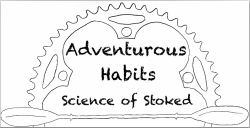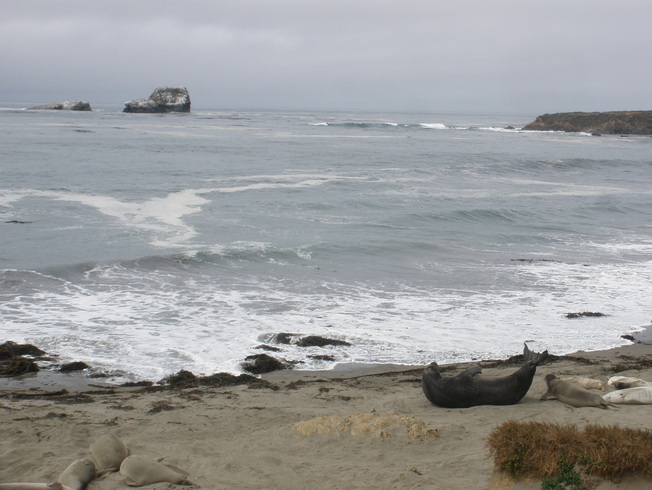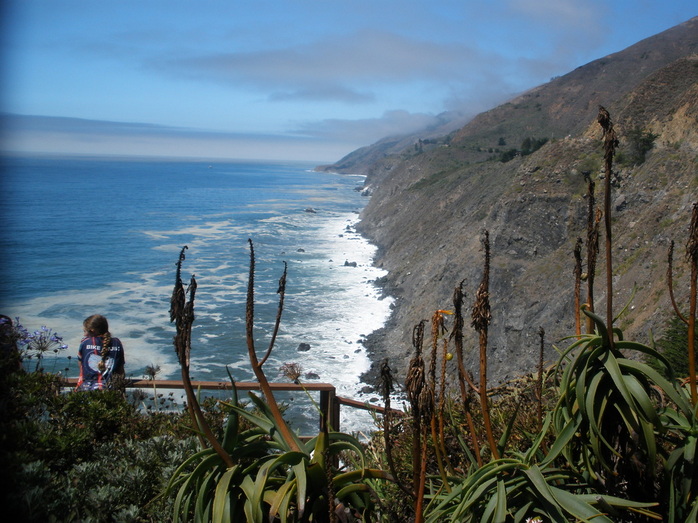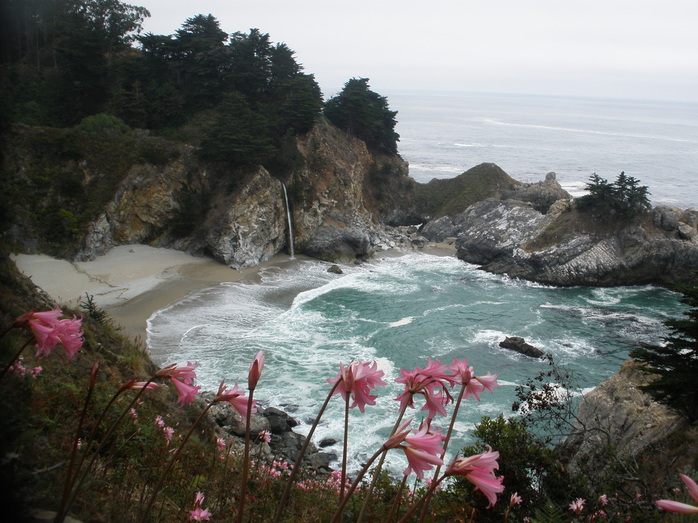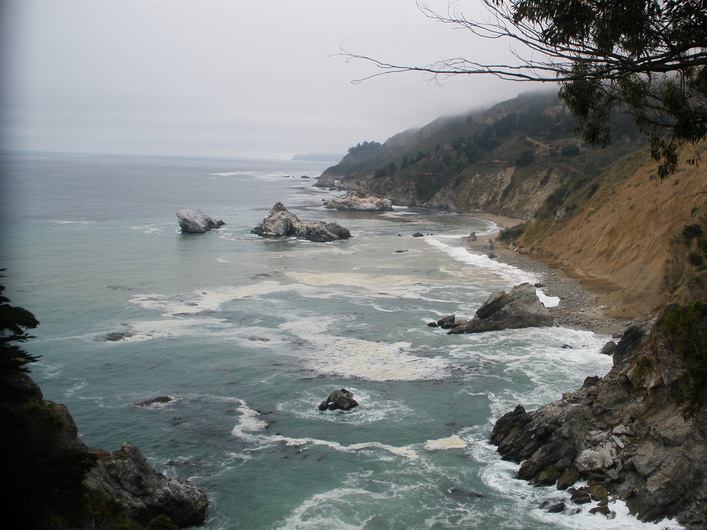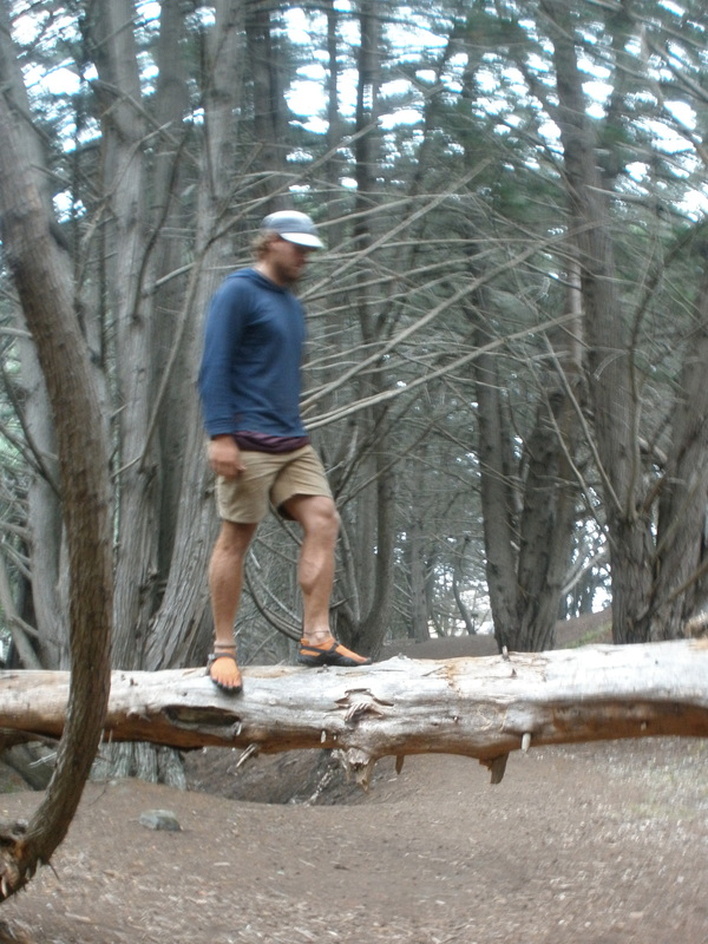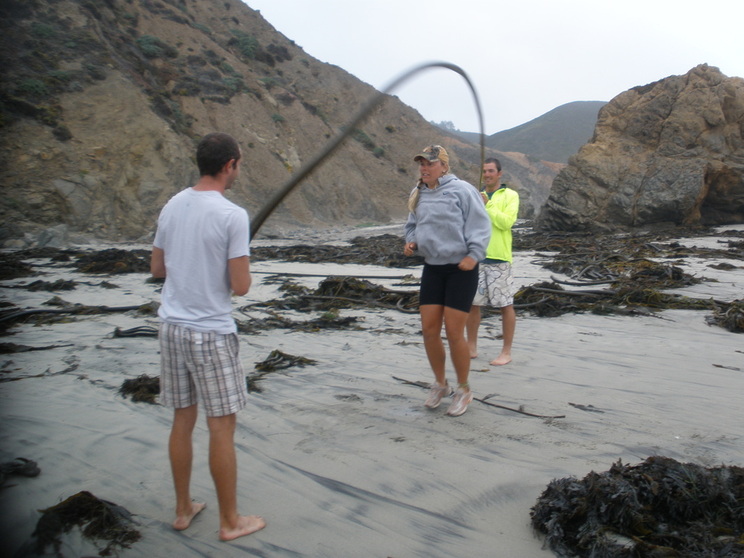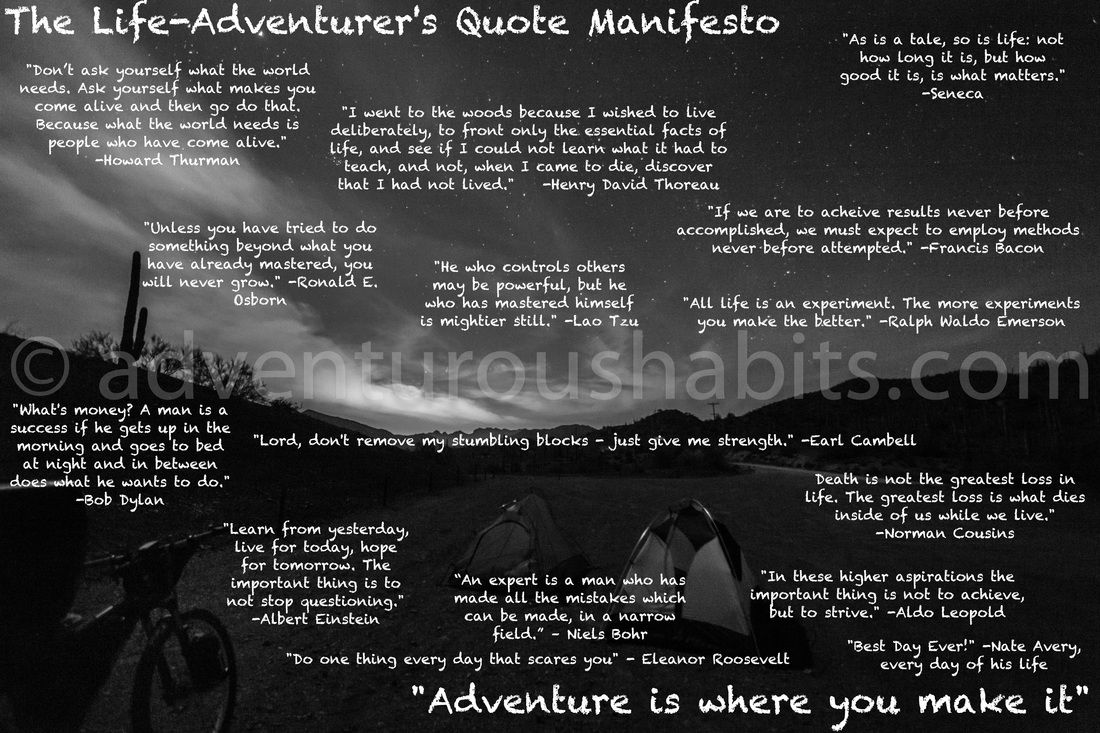It seems that the trees exist only in groves at lower elevations, at least at this southern latitude, and often times surround streams. I imagine that they need much more water than a typical tree, and that the streams in combination with the massive amounts of fog that come off the water here, promote their growth.
Upon first entering the Cathedral, a Stellar’s Jay, possessing some of the most vibrant blue colors I have ever witnessed in nature, landed sideways upon the bark of a thick redwood, hopped in a circle, and looked me in the eye from his perch about three feet away. I would like to think that ‘welcome’ was what he was telling me. I suspect it was probably more like ‘leave your food and then leave my forest alone’.
From the mountainside at higher elevations, the redwoods don’t exist anymore and you can see out for a view of the valley. The striking thing about the view is all the different types of trees visible make up the canopy, meshing together as a single, cohesive unit but still exerting individuality. The Redwoods stand out because not only do they tower over other trees, but they have a slightly gnarled mangy appearance in their uppermost branches.
I soon made my way down a massive decent to the coast and found Pfeiffer Beach. The final footpath leading down to the beach weaves through gnarled and twisted trees that remind me of savannah vegetation from the Discovery Channel. Underneath their low canopy, their branches and roots create a labyrinth of wood to navigate through. A small, calm creek runs alongside the long, riparian grasses, leaning in the direction of flow next to the footpath. The lazyness of the creeks waters contrast greatly with the thunderous crashes that can be heard from up ahead.
The beach itself exerts a force over me that might rival the force it experts upon the large rock outcrops just a few meters off the shore – brown and craigy-looking like the cracked skin of a walrus and filled with large archways coming underneath them, the waves crash upon them from seemingly nowhere. They swell up out of calm seas just a few meters before the outcrops to form massive waves – clearly an effect of the underwater dropoff just beyond the outcrops. The gargantuan waves crash into the rocks, spraying whitewater in the air for what approaches ten seconds before it lands again. Other waves come crashing through the arch-caves with clearly lethal forces.
The immediate danger all around makes the heart start to race a bit until it realizes that the steep slope of the beach continuously wins out over the waves and tides, keeping the dangerous waters at bay. Now with no camera, I am not able to take pictures of this place; perhaps it is for the better, for words come crashing into my mind as the waves come crashing to shore – so many I can’t catch them all, but only hope to capture enough to paint a picture of this scene.
The rest of the crew returned from Carmel just in time to go to Julia Bond Pfeiffer State Park, where we visited the famous McKee falls, which is a somewhat inaccurately named place. The 80 foot stream free falling off the edge of a green, vegetated cliff straight onto the white sands of the cove beach and into the ocean is indeed spectacular, but the scene and the story here stretches far beyond just the falls. The narrow entrance to the wide cove allows the action of the waves to amplify and it creates a dual cycle wave action, one breaks but doesn’t travel, and the second breaks on top of the first and travels, fanning outwards over the beach as a shield of white water that slowly fades back to the vibrant turquoise shade found in the rest of the cove (although nowhere else along the coast – I suspect that this is a local effect of the amount of turbidity and dissolved organic matter found in this particular cove). The beach located here was not always here – in fact the waterfall here used to crash right into the ocean itself. However, in 1983 a massive landslide removed thousands of tons of material off the steep side of a cliff just north of the cove, sending all this material into the water and forcing major re-construction to be done on the destroyed section of the 1. Over the years, the southbound currents along the coast picked up the sand from this landslide and deposited them in this cove, forming the beach under the falls as well as many other beaches south of the location.
